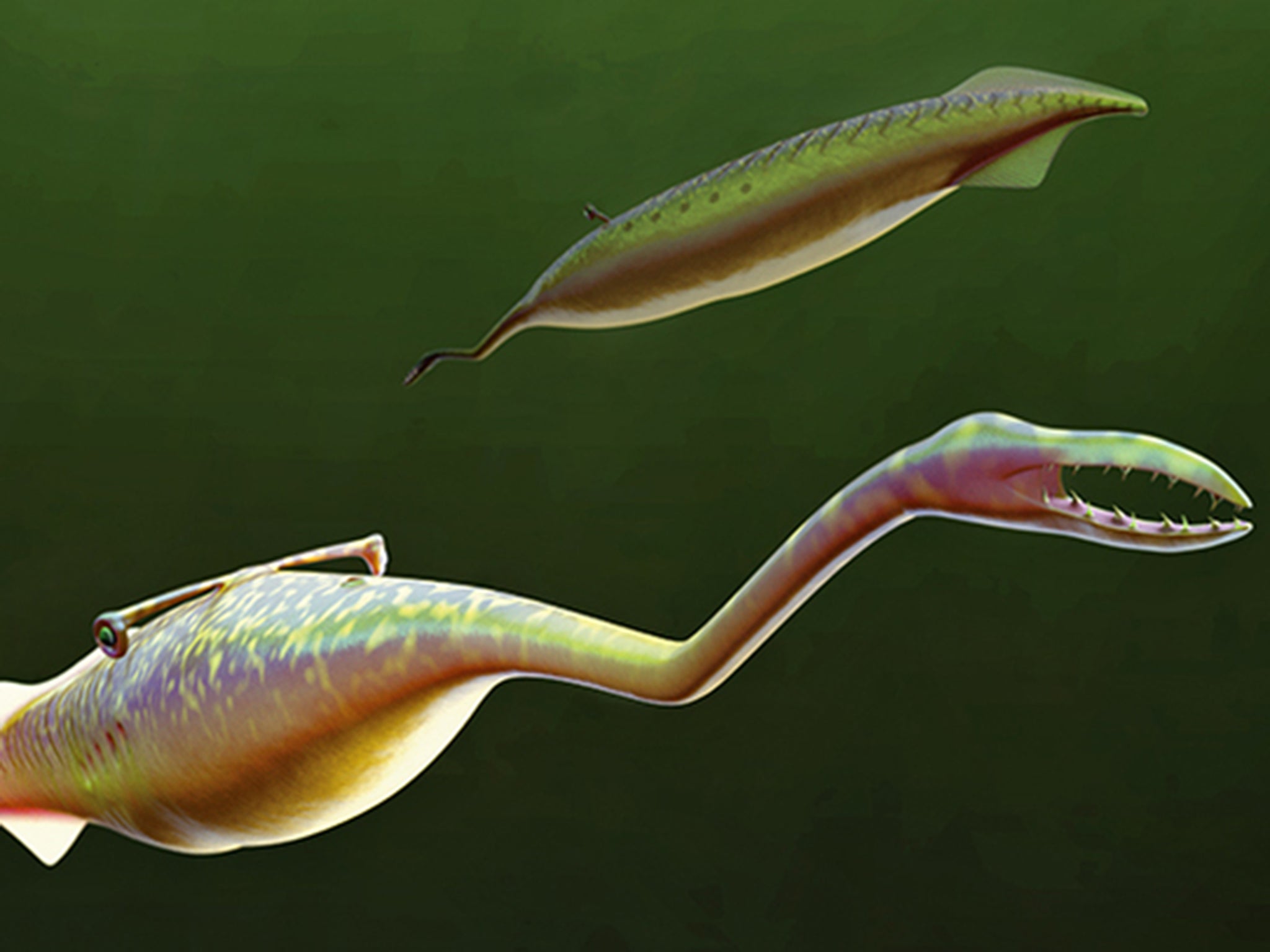Tully Monster: Scientists finally solve the mystery of the 300-million-year-old fossil
'Some people thought it might be this bizarre, swimming mollusc. We decided to throw every possible analytical technique at it'

For half a century scientists have argued about whether it was a snail without a shell, a worm with an extendable jaw or some other kind of long-extinct creature deserving a phylum of its very own.
But now a team of palaeontologists have finally solved the mystery of the 300-million-year-old Tully Monster – one of the weirdest specimens in the fossil record – and concluded that it was an early example of a jawless fish with a primitive backbone.
The first Tully Monster, Tullimonstrum gregarium, was discovered by amateur fossil hunter Francis Tully in 1958 while scouring the disused mining pits of north-eastern Illinois. With an oddly-extended pair of eyes on stiffened stalks, it was evidently a marine predator of some kind, but experts were stumped over where it belonged in the tree of life – although most still judged it to be a spineless invertebrate.
“Basically, nobody knew what it was. The fossils are not easy to interpret, and they vary quite a bit. Some people thought it might be this bizarre, swimming mollusc. We decided to throw every possible analytical technique at it,” said Professor Derek Briggs, curator of invertebrate palaeontology at Yale Peabody Museum of Natural History in New Haven, Connecticut.
An X-ray analysis of the digitised images of many Tully Monster specimens, which grew up to a foot long, has now revealed that it had gills like a fish, multiple rows of teeth next to its extendible mouth and a stiffened rod for a backbone, putting it firmly in the “chordate” phylum, which includes vertebrates such as birds, mammals and man.
Using synchrotron X-ray radiation to investigate every millimetre of the 2,000 specimens of Tully Monsters kept at the Field Museum in Chicago, the researchers discovered the primitive backbone or “notochord”, which showed that it was clearly not the spineless wonder earlier scientists had thought it to be.
“By digitising our collections, taking photographs of our fossils and placing all the data into a database, we made it easier for our researchers to search our collections and find specimens with new and sometimes rarely preserved evidence that may be critical for their research,” said Paul Mayer of the Field Museum.
“The monsters are related to the jawless fishes that are still around today by a unique collection of traits, including primitive gills, rows of teeth, and traces of a notochord, the flexible rod-like structure along the back that’s present in chordate animals – including vertebrates like us,” Dr Mayer said.
Victoria McCoy of Leicester University, who carried out the work as a graduate student at Yale and was the lead author of the study published in the journal Nature, said that the X-ray analysis clearly shows where the Tully Monster belongs in the grander scheme of life, being most closely related to the living lampreys or jawless fish.
“I was first intrigued by the mystery of the Tully Monster. With all the exceptional fossils, we had a very clear picture of what it looked like, but no clear picture of what it was,” Dr McCoy said.
“It’s so different from its modern relatives that we don’t know much about how it lived. It has big eyes and lots of teeth, so it was probably a predator,” she said.
Tully Monsters have only ever been found in Mazon Creek, one of the world’s richest fossil sites about 50 miles southwest of Chicago. It achieved celebrity status in 1989 when it became the state fossil of Illinois.
Join our commenting forum
Join thought-provoking conversations, follow other Independent readers and see their replies
Comments
Bookmark popover
Removed from bookmarks